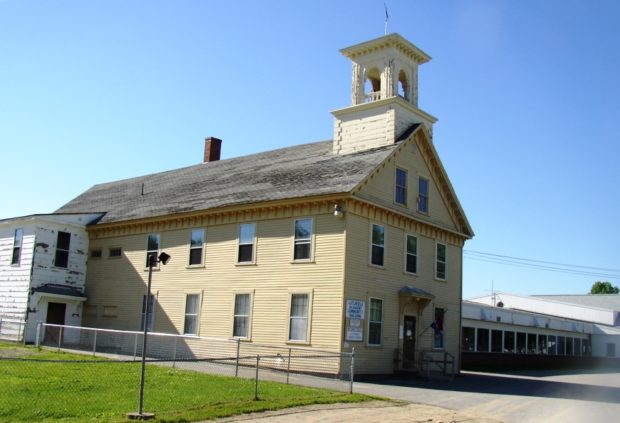
Early Academies in Maine
From the late 1700s through the 1800s, several academies were formed to serve the needs of some Maine communities. Some were founded on religious grounds and some offered boarding programs. For example:
Newcastle’s Lincoln Academy was chartered in 1801 by the General Court of Massachusetts ‘for the purpose of promoting Piety, Religion and Morality.’ 178 citizens from area towns signed the original petition and then contributed over $3,000 to found the school. . .”*
Academies Operating in 2019
Berwick Academy in South Berwick, the State’s first, was founded in 1791, well before Maine became a state. It was a joint venture with people in southern Maine: Berwick, York, Kittery and Wells; and nearby Rollinsford and Portsmouth New Hampshire. The goal was to improve educational opportunities for their children in a time when public schools were seriously inadequate.
The next year, more remote Fryeburg and Washington academies were founded. These were followed in the early 19th century by Lincoln Academy (1801) in the Lincoln County town of Newcastle, now serving 18 area towns; Blue Hill Academy, now George Stevens Academy (1803) in Hancock County’s Blue Hill; and Hebron (1804) in the Oxford County Town of Hebron.
Thornton Academy in Saco (1811), North Yarmouth Academy in Yarmouth (1814), Gould Academy in Bethel (1836), Lee Academy (1845), and finally Erskine Academy in South China (1883) complete the list of early academies still operating in 2019.
Generally the private academies rely on tuition paid by students or paid by school districts contracting with an academy. Several of the early academies were supported by land grants that could be sold or managed to meet expenses. Thus the Maine townships of
Days Academy Grant Township (Unknown Academy)
North Yarmouth Academy Grant Township
Pittston Academy Grant Township (Unknown Academy)
Taunton and Raynham Academy Grant Township (A Massachusetts academy), which abuts Brassua Township
Other Academies
Gorham Academy was approved by the Massachusetts Governor in 1803. At the time, there were only six incorporated academies in Maine. The Academy building was dedicated on September 8, 1806, and opened on September 9, 1806. Funds to operate it came from the students’ tuition and the sale of wildlands granted to it by the legislature. The Academy was at first a male preparatory school, then co-educational, then male, then female. In 1856, it again became co-educational as the Gorham Seminary. It closed in 1877 when students attended the new State Normal School in 1878.
Cherryfield Academy was founded in 1829, but it was not until 1850, that the Union School District was formed to provide the Academy a permanent home. The first floor of the new building was used as a town hall and for public entertainments, the second for the school. Cherryfield Academy conducted classes until 1964, when a new regional high school was completed.
Freedom Academy was authorized by a special act of the state legislature in1836 and continued to operate until destroyed by fire in 1957.
Limington Academy was incorporated in 1848, opening in 1851 in the village schoolhouse. Later it moved to the Masonic building, then opened its own building.
In 1834 Edward Little established and endowed Lewiston Falls Academy, with the donation of nine acres of his own property. It is now Edward Little High School in Lewiston.
Litchfield Academy began classes in 1840 as a private tuition-based school in the Congregational Meetinghouse. It is now used as a community center.
Bridge Academy in Dresden was founded in 1891, funded by private and public funds until 1966.
Patten Academy was incorporated in 1847 and continued until at least 1998. In 2019 Patten students attended schools of Regional School Unit 50.
In 1859 the Harpswell Academy Corporation met in North Harpswell to begin their project to create an academy building. It too served as a community center until destroyed by fire in 1912.
Videos!
Additional resources
* “Lincoln Academy.” http://www.lincolnacademy.org/about-la/history/

